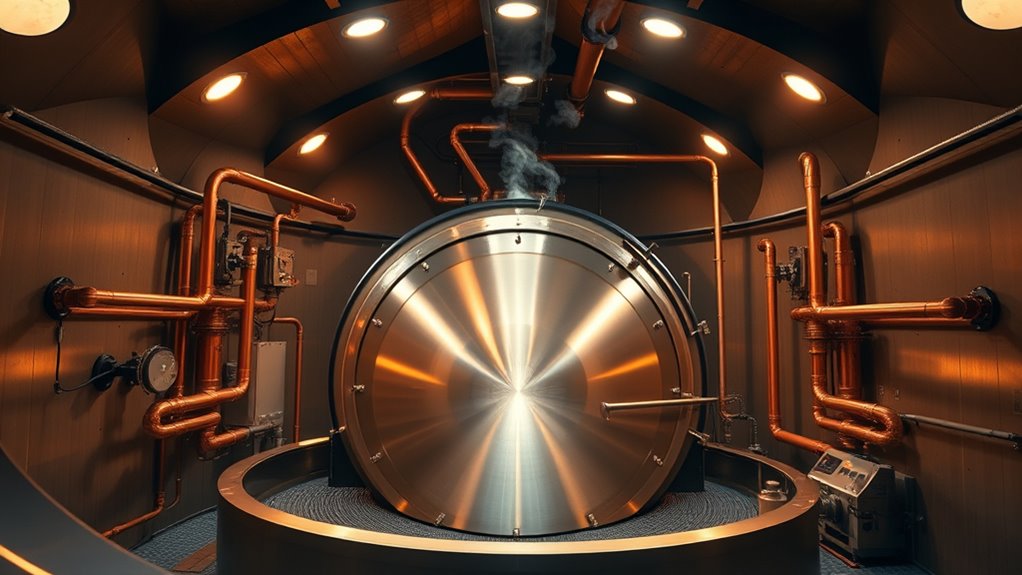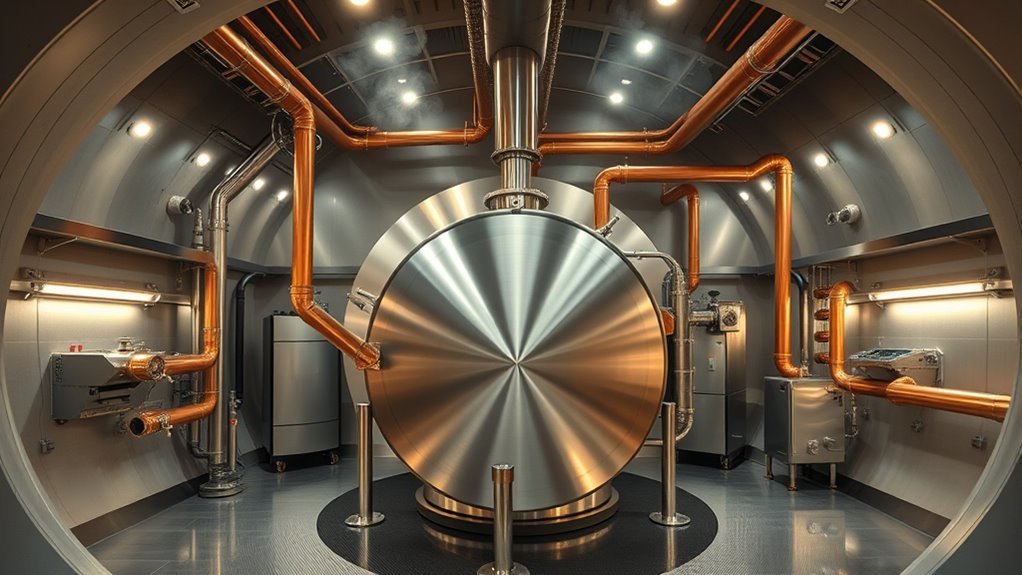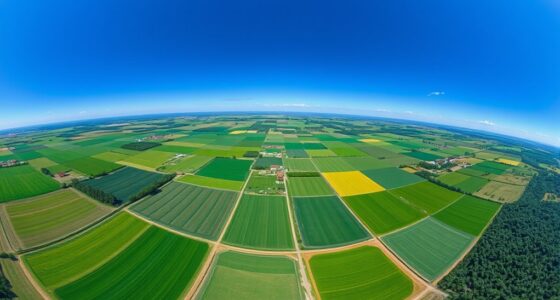To boost efficiency and sustainability in your circular roastery, focus on implementing heat recovery systems that capture excess heat from roasting equipment. Reusing this heat for preheating beans or warming spaces cuts energy use and reduces emissions. Installing energy-efficient devices further minimizes waste and enhances your eco-friendly practices. By adopting these strategies, you’ll streamline operations and lead in industry sustainability efforts—exploring these solutions more deeply can help turn your roastery into a model for innovation.
Key Takeaways
- Implement heat recovery systems to capture and reuse excess heat during roasting processes.
- Utilize energy-efficient equipment and modular designs to minimize overall energy consumption.
- Integrate preheating and warming systems that leverage recovered heat to improve operational efficiency.
- Incorporate smart insulation and airflow management to reduce heat loss and enhance energy conservation.
- Adopt renewable energy sources to further support sustainability and reduce carbon emissions.

Circular roasteries are transforming the coffee industry by emphasizing sustainability and innovative design. As you explore this approach, you quickly realize that sustainable design isn’t just about using eco-friendly materials; it’s about creating processes that minimize environmental impact at every step. One of the key elements is waste reduction, which plays a crucial role in making your operations more efficient and eco-conscious. Instead of discarding byproducts, you find ways to repurpose or recycle them, turning what once seemed like waste into valuable resources. For example, chaff and coffee grounds can be composted or used as fertilizer, reducing landfill contributions and closing the loop on waste.
Circular roasteries minimize waste by repurposing byproducts into valuable resources, promoting sustainability and operational efficiency.
You’ll appreciate how circular roasteries prioritize waste reduction by designing systems that optimize resource use. This can mean integrating equipment that captures and reuses heat, decreasing energy consumption and lowering operational costs. By implementing these systems, you’re not just trimming expenses—you’re actively reducing your carbon footprint. The focus on sustainable design extends beyond materials and waste; it involves rethinking the entire roasting process. You might install modular, scalable equipment that adapts to your needs, reducing unnecessary energy use. This approach encourages a shift away from linear models of production, promoting a circular economy where everything is reused, recycled, or repurposed. Additionally, adopting energy-efficient technologies can further enhance your sustainability efforts and operational resilience.
In your pursuit of energy efficiency, heat recovery becomes a focal point. Circular roasteries employ innovative methods to capture excess heat generated during roasting and reuse it to preheat beans or warm facilities. This not only conserves energy but also enhances operational efficiency. As you implement heat recovery systems, you notice how they align with your sustainability goals—saving energy, reducing costs, and lowering emissions. These systems often integrate seamlessly with sustainable design principles, creating a cohesive workflow that minimizes waste and maximizes resourcefulness.
The beauty of adopting a circular approach is that it encourages constant innovation. You’re motivated to seek out new technologies and practices that further improve energy efficiency and waste reduction. Whether it’s through smarter insulation, better airflow management, or integrating renewable energy sources, each step contributes to a more sustainable and resilient operation. Ultimately, by embracing circular roasteries, you’re not only producing high-quality coffee but also championing a more responsible, environmentally friendly industry. This mindset helps you stay ahead of regulations, appeal to eco-conscious consumers, and lead the way toward a greener future for coffee production.
Frequently Asked Questions
How Does Heat Recovery Impact Overall Roasting Quality?
Heat recovery improves your roasting quality by maintaining heat retention, which helps guarantee consistent roasting temperatures. This consistency enhances flavor stability, allowing you to produce beans with uniform flavor profiles. By efficiently recapturing heat, you reduce temperature fluctuations, leading to better control over the process. Overall, heat recovery supports flavor consistency and ideal roast development, making your roasting more precise and high-quality.
What Are the Initial Costs for Implementing Circular Roastery Systems?
You’ll likely face an initial investment of $50,000 to $200,000 for implementing circular roastery systems, depending on size and technology. This financial consideration covers equipment upgrades, heat recovery systems, and infrastructure modifications. While upfront costs seem high, many roasteries see long-term savings through energy efficiency and reduced waste. Investing now can boost your sustainability credentials, potentially attracting eco-conscious customers and improving your bottom line over time.
Can Circular Roasteries Adapt to Different Coffee Bean Types?
Yes, circular roasteries can adapt to different coffee bean types. You can adjust the roasting parameters to suit various bean varieties, offering greater roasting flexibility. This adaptability allows you to experiment with different profiles and optimize flavor extraction for each bean type. By utilizing versatile equipment and flexible processes, you guarantee consistent quality across diverse coffee beans, making your roastery more efficient and responsive to customer preferences.
What Maintenance Is Required for Energy-Efficient Roasting Equipment?
Maintaining energy-efficient roasting equipment is like tending a garden—you need regular care. You should check equipment durability to prevent breakdowns and follow strict cleaning protocols to keep heat recovery systems running effectively. Regular inspections, replacing worn parts, and cleaning filters ensure the equipment stays efficient and prolongs its lifespan. Consistent maintenance not only boosts performance but also saves energy, making your roasting process sustainable and cost-effective.
How Do Circular Designs Influence Roastery Scalability?
Circular designs enhance your roastery’s scalability by allowing modular expansion, so you can grow without overhauling your entire setup. They offer spatial flexibility, enabling you to reconfigure equipment easily as your needs change. This adaptable approach helps you optimize space utilization, reduce downtime during upgrades, and streamline operations. With a circular layout, you can efficiently expand capacity, making your roastery more resilient and responsive to market demands.
Conclusion
By adopting circular roasteries, you can boost energy efficiency and recover heat effectively. Did you know that heat recovery systems can reduce energy consumption by up to 30%? This not only cuts costs but also minimizes environmental impact. Embracing these practices transforms your operation into a sustainable, innovative space. So, take action now—your commitment to circularity can make a significant difference in both profitability and the planet’s health.









